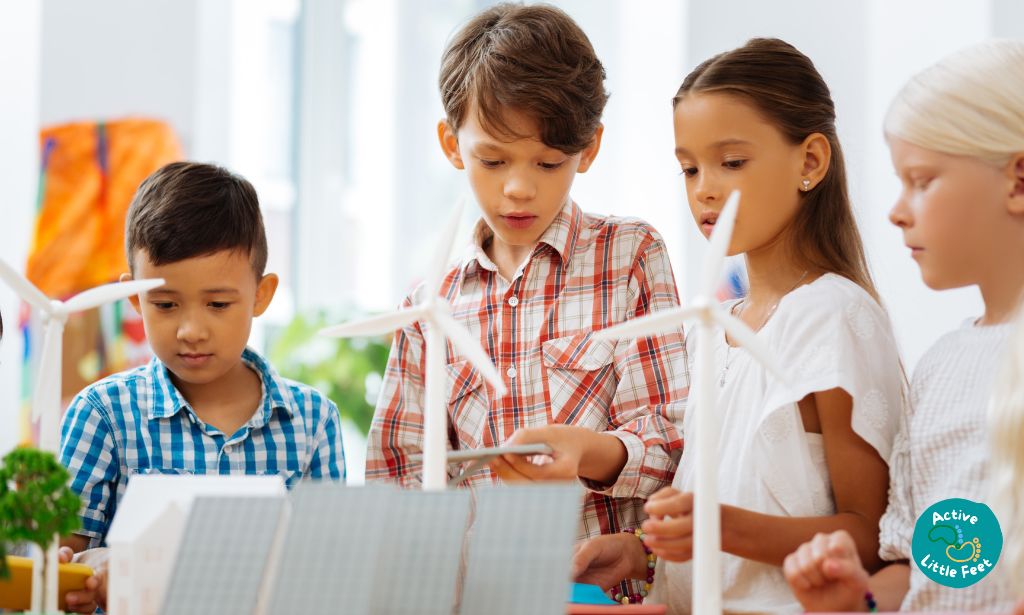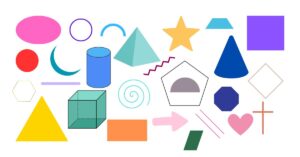Activities and games are suitable for children’s physical development but can also be used to develop their cognitive skills. Specifically, puzzles are a fun activity that engages the brain, boosts creativity, and encourages problem-solving in children; that’s cognition.
Puzzles encourage cognitive development by teaching kids to plan and test ideas, solve problems, and employ strategic thinking. The puzzles range from simple to complex, perfect for gradual cognitive development.
- What Is Cognitive Development?
- 1. Puzzles Develop Problem-Solving Skills
- 2. Children Learn to Recognize Patterns
- 3. Puzzles Build Visual Perception
- 4. Puzzles Improve Spatial Reasoning
- 5. Puzzles Improve Attention Span and Build Patience
- 6. Puzzles Help Improve Your Child’s Vocabulary
- 7. Puzzles Help Improve and Reserve Memory
What Is Cognitive Development?
Psychology experts define cognition as the general process of perception, concept formation, pattern recognition, attention, memory, working memory, intelligence, reasoning, and language development. Cognitive development is working to improve or grow these skills in your child so that they can understand the world around them.
Puzzles like jigsaws, wooden brain teasers, crosswords, and 3D puzzles can benefit your child’s physical and cognitive development. However, the type of puzzle and difficulty will depend on your child’s age and skill. Read this article about choosing a puzzle for your child so you can make the right purchase.
This article will list how puzzles help with children’s cognitive development. Note that these benefits are not limited to age. Your child’s logical thinking and problem assessment skills will change as they grow, depending on the puzzle difficulty level.

1. Puzzles Develop Problem-Solving Skills
Puzzle pieces come in different shapes, sizes, colors, and designs. When solving a puzzle, your child has to figure out where each part fits by shape, color, and size. The process of solving a puzzle promotes trial and error.
Children have to try several options before they complete the puzzle. First, they will flip the pieces to figure it out. Then, their little brains will formulate and test theories or even start the entire puzzle again to solve it.
A puzzle will provide several opportunities for your child to practice problem-solving, a vital life skill best learned when young.
2. Children Learn to Recognize Patterns
Children must identify sequences and how the puzzle pieces relate when solving puzzles. For example, they’ll explore the relation between number puzzles and puzzles that form color sequences.
Once your child recognizes the sequence, it becomes easier to solve the whole puzzle. Next, figuring out how two variables, numbers, or shapes relate is integral to cognitive development.
Pattern recognition is an aspect of problem-solving that heightens your child’s logical skills. Eventually, they will learn to identify obvious and non-obvious connections and devise the best strategy to solve the puzzle.
If you need help understanding patterns, introduce your kids to activity books. This article gives insight into the benefits of activity kids and how they’ll teach your kid about patterns and shapes.

3. Puzzles Build Visual Perception
Visual perception is the ability to interpret things and act upon visual stimuli. For example, when solving puzzles, children see colors, shapes, and images on the puzzle pieces. The information they receive from the puzzle pieces travels to their brains, where they interpret it, hence visual perception.
Through this process, they figure out how the puzzle pieces are related, helping them build their puzzle. They also understand that the many parts of the puzzle all connect to create a bigger one. Visual perception is also how kids learn how to read and write.
There are several aspects of visual perception that your child can improve using puzzles. These include;
- Visual memory – children will remember what they see
- Visual comprehension – they will make sense of what they see
- Visual discrimination – they will spot the similarities and differences in what they see
- Visual analysis and synthesis – they will try and put together patterns based on what they see
- Perception of shapes – they will recognize common shapes
- Visual closure – the ability to identify an object by seeing part of it
This point also applies to picture talk activities and how they improve visual perception. If you’re interested in an alternate activity, this article delves into picture talk activities and their relation to cognitive development.
4. Puzzles Improve Spatial Reasoning
Spatial reasoning is related to visual perception. For example, once your child can see and recognize the shapes and colors of puzzle pieces, they can figure out their position on the puzzle. Have you ever seen your toddler trying to fit a big puzzle piece into a smaller space?
They might do this several times, but eventually, through spatial reasoning, they will realize that a piece is too big or small to fit into a particular space. Spatial reasoning is a cognitive skill that will enable your child to have incredible organizational skills.
Think about someone who can pack several pieces of luggage in a small car boot or a future Tetris game pro. Spatial reasoning also helps kids understand the position of specific numbers and letters, for example, 9 and 6 or the letters d and b.
5. Puzzles Improve Attention Span and Build Patience
Does your child sit still longer than usual when solving a puzzle? Although it can be frustrating, children understand that the goal of solving the puzzle is ending up with a complete picture.
Building a complete puzzle creates motivation. Therefore, your child will sit and deal with all the uncomfortable emotions. It might take more than a day, but it will return to it and figure it out. Ultimately, they will have a sense of achievement and resilience with an impressive concentration span.
6. Puzzles Help Improve Your Child’s Vocabulary
Language development is also a part of cognitive development. A child’s communication skills begin developing from the toddler stage onwards. Even though they cannot pronounce some words correctly, that is the language they use to understand the world around them.
Word puzzles, including anagrams, are the best option to improve language and vocabulary. Anagrams are a play on words created by rearranging letters to form new words. For example, kids can rearrange the word save to form the word vase.
Older or advanced kids can enhance their vocabulary through crosswords and word search puzzles. Crosswords give the word’s meaning so you can figure out the word. Word search puzzles are letter grids with hidden words between them.
Both help children recognize words, learn context clues, introduce new vocabulary, and review existing ones.

7. Puzzles Help Improve and Reserve Memory
The process of trial and error when solving puzzles requires children to have remembrance. For example, when a piece does not fit a puzzle, your child will put it aside and try another. That means they must remember the puzzle pieces’ size, shape, and color and where they fit.
Working on puzzles will enable your child to form new brain cell connections and reinforce old ones enhancing their short-term memory. Even though they do not complete the puzzle in one sitting, your child must rely on their working memory to complete the puzzle.
Besides building cognitive skills, puzzles encourage independent play because kids have fun. Also, working on a puzzle only needs a little adult supervision and encouragement. This activity can build your child’s confidence and reduce stress for anxious kids.
Remember, puzzles should present a challenge while still being age appropriate for your child. That is the best way to build confidence and achieve a sense of accomplishment as they advance to more challenging puzzles in the future.
Puzzles are fun, engaging, and excellent for cognitive development. But that’s not the only way to build your child’s cognitive skills. Read this article to understand how drawing impacts your child’s cognitive development.




